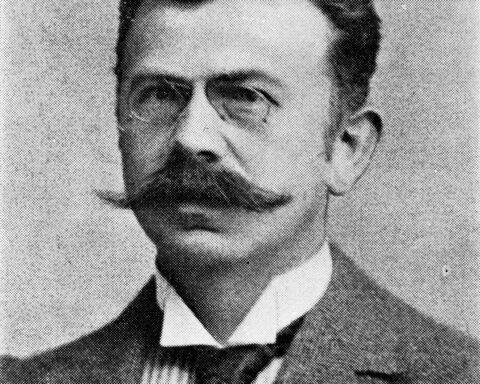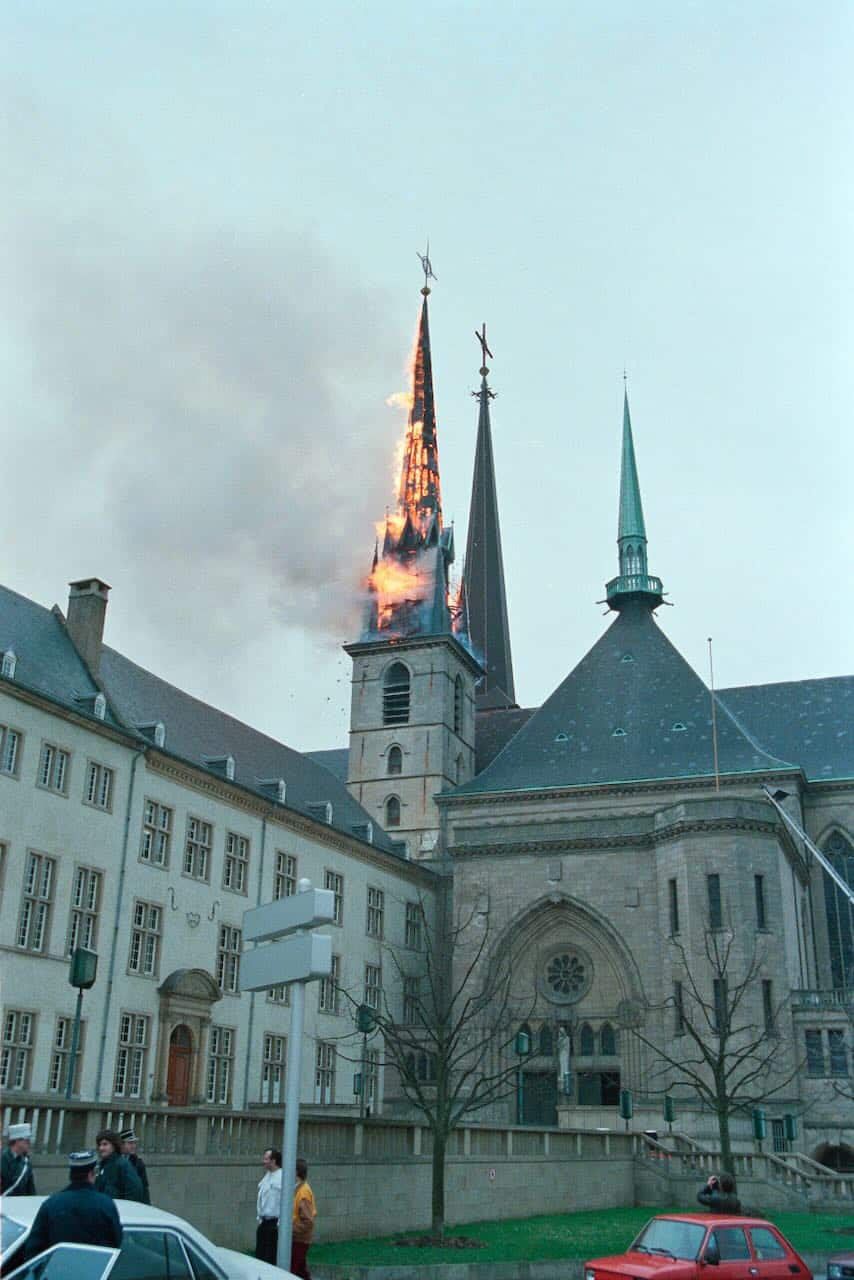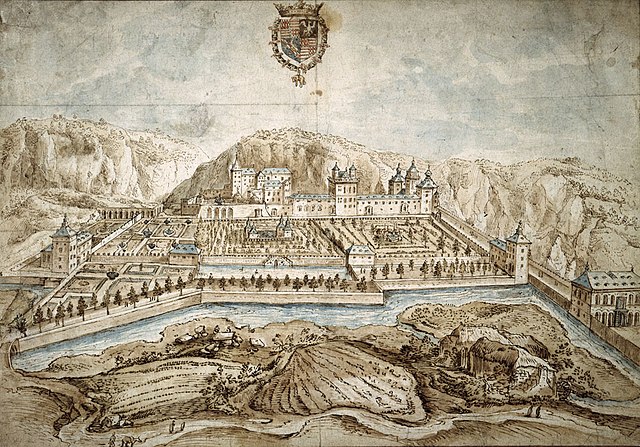On 5 April 1985, a fire broke out at Notre-Dame Cathedral in Luxembourg, causing severe damage to its west tower. This article examines the incident, its impact, and the reconstruction efforts that followed.
The Fire and Immediate Response
Shortly around 2 p.m., a fire ignited in the west tower of Notre-Dame Cathedral, engulfing its upper sections in flames. The fire, fueled by the wooden structure and ongoing renovation work, spread rapidly. Smoke billowed into the sky, alarming residents and authorities. Firefighters arrived swiftly, working against the strong winds that exacerbated the flames. Despite their efforts, the fire caused the collapse of the tower’s tip, sending debris crashing into the courtyard of the Foreign Ministry. Fortunately, the nearby National Library remained largely unscathed. The intense heat melted the cathedral’s bells, including the Virgin Mary, Willibrord, Peter, and Cunigunde bells, which had historically rung for major city events. While the flames mainly affected the tower, parts of the central nave suffered damage from falling debris. Emergency crews contained the fire after several hours, preventing it from spreading to the main sanctuary. The cathedral, a symbol of Luxembourg’s cultural and religious heritage, faced an unprecedented crisis, requiring urgent action to restore its historical integrity.
Reconstruction Efforts and Challenges
Restoration efforts began immediately, with engineers and historians assessing the structural damage. Fortunately, original renovation plans from 1937 had survived, stored in a metal cartridge within the cathedral’s archives. These plans provided invaluable guidance for rebuilding the damaged sections. By October 1985, just six months after the fire, the west tower’s reconstruction was completed, restoring the cathedral’s iconic silhouette. However, the bells, an essential part of the cathedral’s identity, needed replacement. In July 1986, new bells were commissioned and cast in the Netherlands by the prestigious Petit & Fritsen bell foundry. Their installation reinstated the cathedral’s distinctive chimes. Additional structural reinforcements were made to protect the building from future fire risks. The rapid restoration work was a testament to Luxembourg’s dedication to preserving its historical landmarks. Financial support from the government and private donors played a crucial role in ensuring the project’s success. Experts emphasized the importance of modern fire prevention measures in historic structures, integrating advanced fire detection systems to prevent similar disasters.
“Flames engulfed the west tower, sending debris crashing into the courtyard and melting the historic bells, marking a tragic day for Luxembourg.”
Legacy and Lessons Learned
The Notre-Dame fire underscored the vulnerability of historic buildings during renovation. It highlighted the need for stringent safety protocols and fire-resistant materials. The swift restoration reinforced Luxembourg’s commitment to cultural preservation. Today, the cathedral stands as a testament to resilience, attracting thousands of visitors annually. The incident serves as a cautionary tale for architectural conservation worldwide, emphasizing the delicate balance between restoration and risk mitigation. Improved fire safety regulations have since been implemented in Luxembourg’s historic buildings, ensuring better protection against similar catastrophes. The 1985 fire remains a defining moment in the cathedral’s history, shaping its preservation strategies for future generations.



















